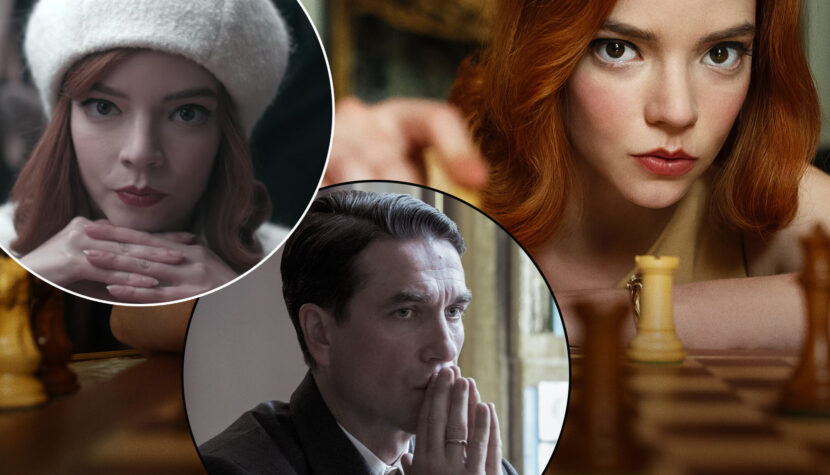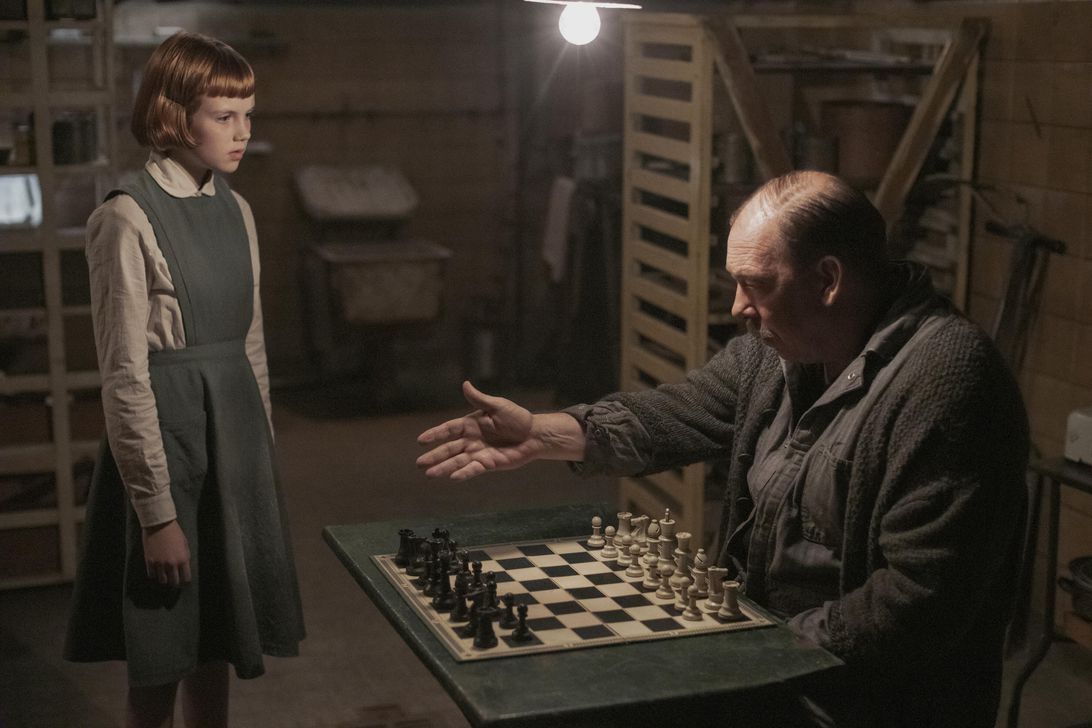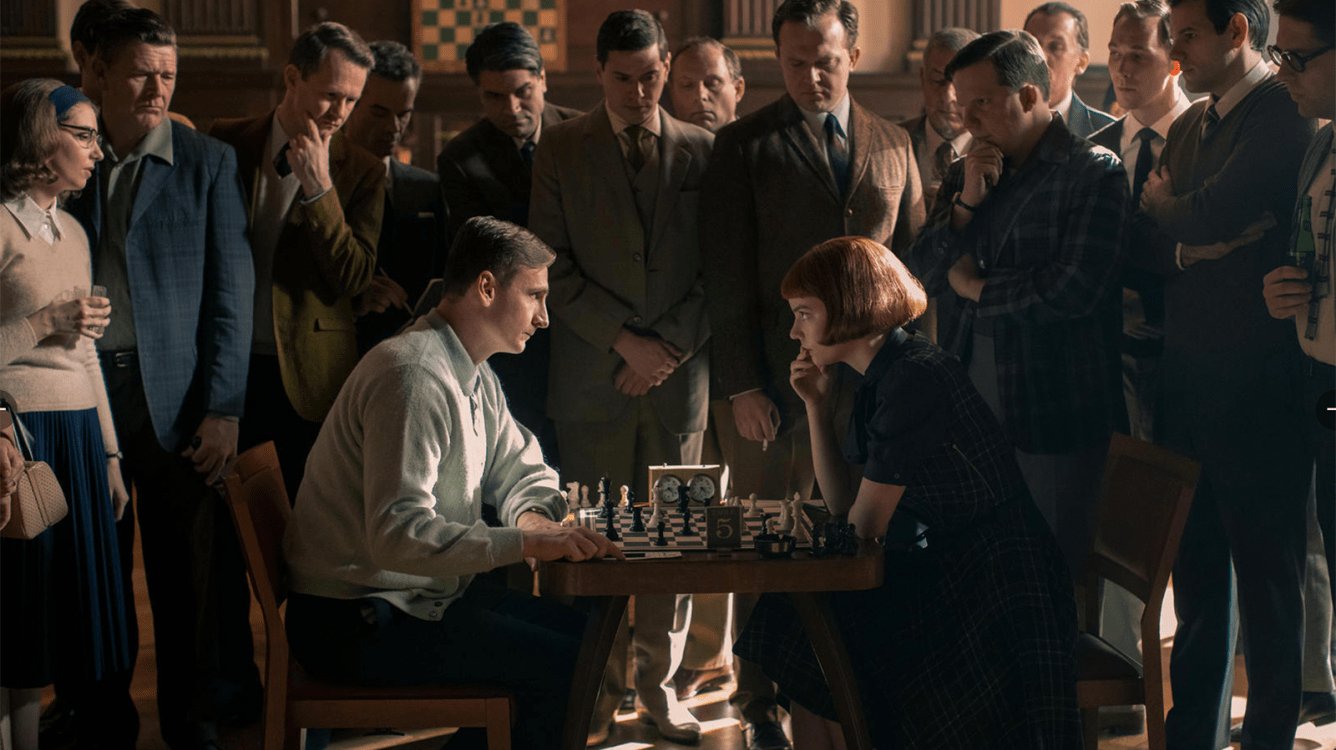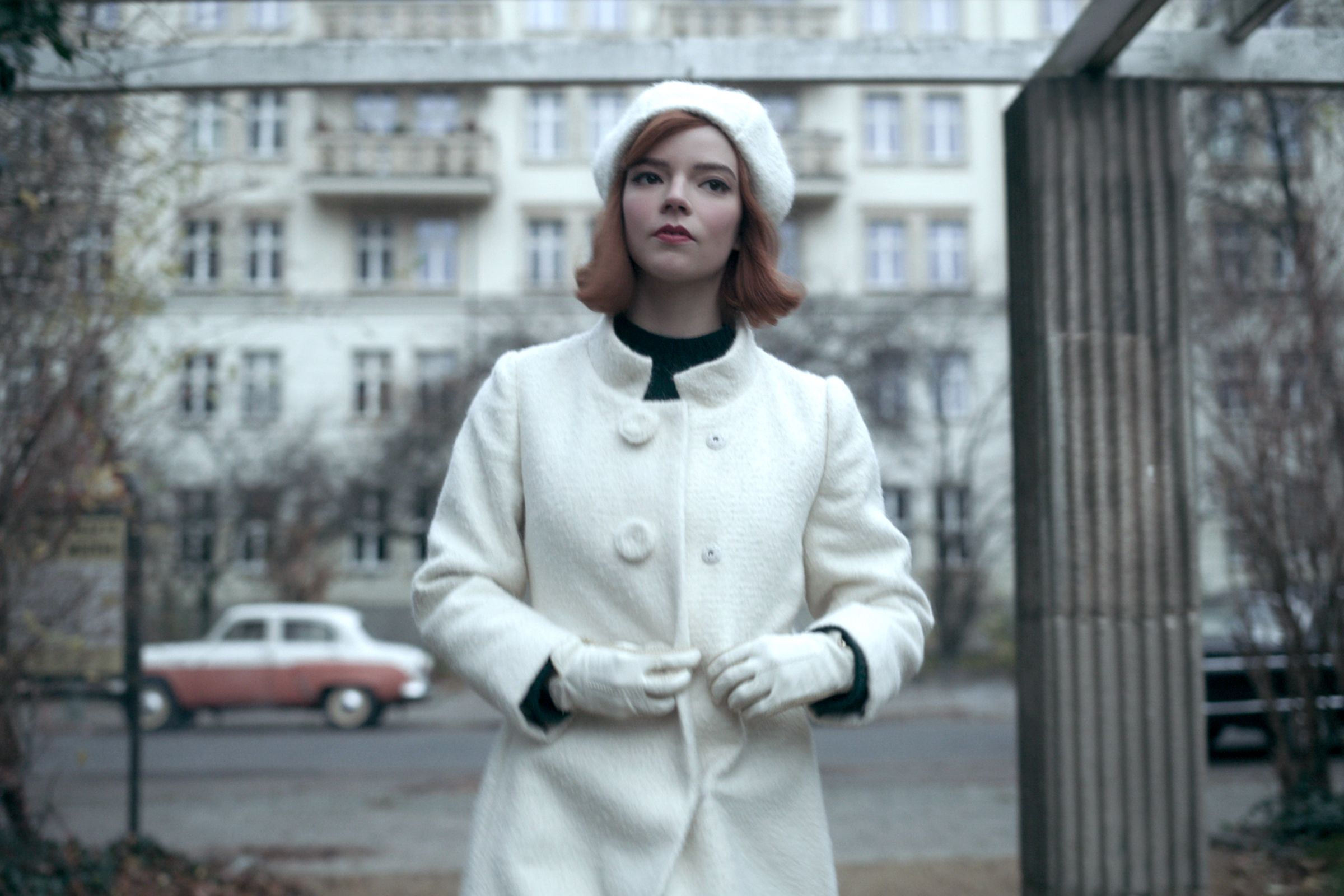Hidden DETAILS in THE QUEEN’S GAMBIT

Most likely, even in their wildest dreams, Allan Scott and Scott Frank, the creators of the original Netflix miniseries The Queen’s Gambit, couldn’t have imagined that thanks to them, the American streaming giant would checkmate other platforms, and their production would become a global phenomenon. According to data shared by Netflix, the miniseries starring Anya Taylor-Joy and Marcin Dorociński was watched in 62 million households within 28 days of its premiere!The Queen’s Gambit impressed notables like Stephen King and David Beckham. However, record-breaking viewership is not the only achievement. The success of the miniseries translated into increased popularity of chess. This is evidenced by, among other things, a doubled number of searches for the term “chess” in the Google browser and a fivefold increase in the number of new players on Chess.com. The Queen’s Gambit is the perfect miniseries for binge-watching. Although Netflix’s production is enjoyable and easy to watch, you can easily miss many hidden details.
Hidden Chess Details
Authenticity

In one of the interviews, Polish chess grandmaster Radosław Wojtaszek admitted that he liked The Queen’s Gambit primarily because there were no mistakes in the chess games depicted on the screen. To ensure the authenticity of the game, the creators of the series hired technical advisors, Bruce Pandolfini, and Garry Kasparov. Bruce Pandolfini is an American chess player, journalist, and former coach of the current world’s second-ranked player, Fabiano Caruana. Kasparov is one of the most famous chess players in history; he was the World Chess Champion from 1985 to 1993 and the first player to cross the 2800 Elo rating mark. Scott Frank himself confirmed that the series would never feature a false move, and the games in the production refer to real chess matches. Apparently, even when the camera pointed at the face of the player making a move, the actors always knew where to make the move, even during very fast-paced games. This is quite impressive and surprising, especially considering that Anya Taylor-Joy, Thomas Brodie-Sangster, and Harry Melling allegedly knew almost nothing about chess before the first day of shooting.
In the same interview, Wojtaszek was particularly amazed at how faithfully the creators of the miniseries captured the atmosphere of chess in the 1960s and 1970s. This mainly concerns smoking cigarettes by the chessboard – something that was still allowed during that period – and playing chess in cafes. The Polish grandmaster noted that alcohol was often present at the chessboard, especially in the Soviet Union.

There is an interesting story related to smoking at the chessboard, although it happened much earlier than the time of the series. In 1927, during a tournament in New York, a clash occurred between the Riga-born chess grandmaster Aron Nimzowitsch and the Yugoslav grandmaster Milan Vidmar. Due to the distracting tobacco smoke, Nimzowitsch and Vidmar came to an agreement not to smoke during their game. Out of respect for his opponent, Vidmar set aside his cigar next to the chessboard, where it remained untouched throughout the game. Despite Nimzowitsch not being bothered by the smoke, he lost the match. Unable to accept the defeat, he went to the tournament officials to complain that his opponent was smoking. Surprised, the tournament director replied that Vidmar had not even held the cigar in his hand during the game, to which Nimzowitsch, born in Riga, allegedly replied, “but he threatened me with smoking.”
Modern Chess Openings
Modern Chess Openings is one of the most important books in the world of chess literature. In brief, it deals with chess openings, also known as debuts, which allow for an effective attack in the subsequent phase of the game. The first edition of this exceptional publication dates back to 1911. Therefore, when Alma (Marielle Heller) gives Beth Harmon (Anya Taylor-Joy) the book Modern Chess Openings, it’s quite a valuable gift. Due to the creators’ exceptional attention to detail, we can observe that the Modern Chess Openings book given to the girl by the custodian is the seventh edition. What’s interesting and fitting, the older Beth buys the ninth edition of the publication later in the miniseries.
Episode Titles
Did you know that the title of each episode of “The Queen’s Gambit” is the name of an official chess move or phase of the game? Here they are: Episode One – “Openings” (referring to the opening phase of the game mentioned earlier), Episode Two – “Exchanges” (referring to the exchange of a rook for a minor piece), Episode Three – “Doubled Pawns” (referring to several pawns of the same color on a single column), Episode Four – “Middle Game” (the phase of the game when players have developed their pieces), Episode Five – “Fork” (a move in which one piece attacks two enemy pieces at once), Episode Six – “Adjournment” (a game that was interrupted during play and remains unfinished), Episode Seven – “End Game” (the final phase of the game when there are few pieces left on the board).
So, what does the title of Scott and Frank’s miniseries mean? “Gambit” is a risky chess opening involving sacrificing one or more pieces to gain a better position. The “Queen’s Gambit,” to which the title of the production refers, arises from the moves 1. d4 d5, 2. c4.
Bobby Fischer
The Queen’s Gambit is based on the book of the same title and on real stories of several chess players, including the literary prototype, Walter Tevis. Beth Harmon most likely bears the closest resemblance to the last American World Chess Champion, Bobby Fischer. Alma (Marielle Heller) suggests this to the viewers when, during a scene in a restaurant in Las Vegas, she calls Benny (Thomas Brodie-Sangster) “Bobby.” It’s hard to say.

Related:
Scenic Details
Beth Harmon’s Makeup and Hairstyles
Based on Walter Tevis’s novel, The Queen’s Gambit miniseries is probably the most stylish production of the year. This is largely thanks to the work of the hairstylist and makeup artist Daniel Parker. Apparently, seemingly trivial details like the color of the main character’s lips or the eyeliner on her eyes had a significant impact on how the audience perceived Beth Harmon. In Netflix’s original production, we don’t just get fascinating chess games but primarily a story of a woman’s coming of age, adversity, addiction, and the struggle to be noticed in the male-dominated world of chess. Beth’s appearance is crucial for the series’ plot, especially since it spans a significant period of time. The passing years, as well as changes in the main character’s behavior, are reflected in details like the color of her lips. Daniel Parker planned all the colors/shades of lipsticks for Beth, even reserving one that symbolized the bond between her and her adoptive mother, Alma Wheatley. Beth’s hairstyles also come into play, from the practical orphanage bangs to the elegant Natalie Wood-inspired styling. Harmon’s psychological state is reflected in her eyeliner. This is most evident in the scenes following her drinking while listening to the song “Venus” by the band Shocking Blue. The final episode of the miniseries ultimately showcases Daniel Parker’s mastery. Makeup and hairstyle give Beth a mature look. She is a dominating, self-assured, and respected character.

The Color Green
It is also worth noting the significance of the color green in The Queen’s Gambit. Here, it is not a symbol of hope but rather of the main character’s addiction problems. Green represents the pills that lead Beth into addiction, the green cap she wears when hungover, and finally, the green dress that the main character wears during her loss to Borgov (Marcin Dorociński) in the sixth episode.
Costumes
Just like the makeup experts, those responsible for costumes and location design did an excellent job. This is mainly reflected in numerous references to the chessboard. Geometric figures on wallpapers, blankets, headboards, or dresses, although not immediately noticeable, are practically everywhere when you take a closer look at the miniseries. All of this is to depict Harmon’s story as one big chess game, in which every character is a chess piece. The greatest masterpiece in terms of costumes, however, is the portrayal of the character’s evolution through them. At the beginning, we see Beth as a child in an orphanage wearing an outfit that resembles a pawn. In contrast, at the end, her costume consisting of a white coat and a matching hat brings to mind the white queen.

How did you like The Queen’s Gambit? Did you notice any hidden details I haven’t mentioned? Be sure to let us know in the comments!





